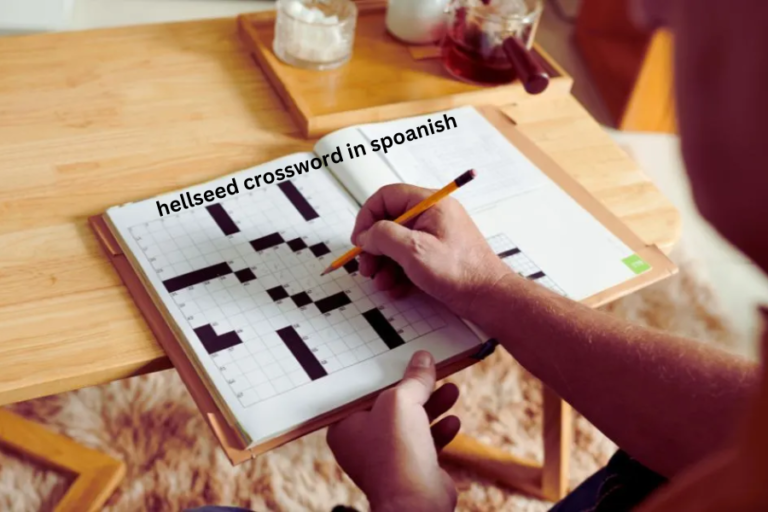Kääntäh: Translating Language, Preserving Finnish Cultural Identity And More Explore
Though many people might not be familiar with the word, “kääntäh” holds significant value in the Finnish language and culture. In this post, we’ll explore its history, customs, and evolution over time.
Kääntäh: What is it?
In English, “kääntäh” translates to “translator” or “interpreter.” The term originates from the Finnish verb “kääntää,” which means “to translate” or “to interpret.” The suffix “-h” is often added to verbs in Finnish to denote the person performing the action.
More than just a word, kääntäh is a symbol of the importance of language and communication in Finnish culture. It represents the role of translators and interpreters in bridging cultural and linguistic gaps.
The Background of Kääntäh Kääntäh in Contemporary Culture
Kääntäh’s origins can be traced back to ancient Finnish communities, where the need for introspection and quiet contemplation was essential for spiritual growth. Over the centuries, it has been deeply intertwined with Finnish mythology, folklore, and traditions. What once began as a solitary practice eventually grew into a collective activity, with events centered around group reflection and storytelling.
The Advantages of Kääntäh Practice
In today’s fast-paced world, kääntäh offers a peaceful retreat from daily chaos. Its principles have found relevance in various aspects of modern life, including art, wellness practices, and intellectual pursuits. Many artists, writers, and thinkers draw inspiration and ideas from this tradition.
Overcoming Kääntäh’s Obstacles
Cognitive Benefits:
Studies show that practicing kääntäh can enhance cognitive functions such as memory, creativity, and problem-solving abilities. Engaging in linguistic exercises stimulates the mind and expands mental horizons.
Emotional Well-being:
Kääntäh also fosters emotional health by providing an outlet for self-expression and reflection. Through the exploration of language and symbolism, individuals can process complex emotions and find catharsis in creativity.
Why the Finnish Language Is Important
Like any craft, kääntäh presents its own set of challenges. Whether it’s dealing with writer’s block or language barriers, practitioners may encounter moments of frustration and doubt. However, these obstacles can be seen as opportunities for personal growth and deeper mastery of kääntäh.
Strategies for Improvement:
To overcome challenges, it’s important to develop strategies that foster progress. Setting realistic goals, seeking feedback, and maintaining consistent practice can help individuals improve their skills over time.
Kääntäh’s Function in Finnish Society
Finnish, a Finno-Ugric language spoken by about 5 million people, primarily in Finland, is an official language of the European Union. The Finnish language, dating back to the 12th century, has evolved with influences from Swedish and Russian.
It holds a special place in Finnish culture as a symbol of national pride and identity. Its complex grammar and unique vocabulary make it challenging for non-native speakers to learn, further elevating the role of translators.
The Kääntäh Evolution
In Finland, kääntäh plays a vital role in fostering communication and understanding between people of different linguistic backgrounds. In a country where the majority of the population speaks Finnish, translation and interpretation services are essential for business, education, and cross-cultural interaction.
The Finnish education system emphasizes the importance of kääntäh, especially in translating educational materials for non-native speakers. This promotes inclusivity and allows students from diverse backgrounds to fully engage in their studies.
Honoring Kääntäh: The Day of the Translator
Traditionally, kääntäh focused on standard translation and interpretation services. Translators handled written documents, while interpreters facilitated real-time spoken communication. These services were indispensable for international business and diplomacy.
However, with advancements in technology and the rise of the internet, the scope of kääntäh has expanded beyond conventional translation.
Modern Localization Services:
Today, localization is in high demand. This process involves adapting a product or service to fit the language, culture, and customs of a specific region. Kääntäh now includes website translation, software localization, and marketing content adaptation, ensuring that global audiences can engage with products in their native languages.
Localization goes beyond simple translation. It considers cultural nuances and preferences, making sure that the content resonates with the target audience.
Celebrating Kääntäh: Translator’s Day
In Finland, October 30th is recognized as “Kääntäjänpäivä” (Translator’s Day). This day is dedicated to celebrating the contributions of translators and interpreters to society. Events and activities highlight the importance of translation services and recognize the challenges and successes of kääntäh professionals.
The Cruise of the Translator (Kääntäjäristeily)
An interesting tradition associated with kääntäh is the annual “Kääntäjäristeily” (Translator’s Cruise). Organized by the Finnish Association of Translators and Interpreters, this event brings together professionals for a day of networking, workshops, and discussions on industry trends.
The Prospects for Kääntäh
As technology continues to evolve and the world becomes increasingly interconnected, the role of kääntäh will adapt as well. There is growing concern that artificial intelligence and machine learning may eventually replace human translators.
However, language and communication are essential for human connection, and kääntäh will always have a significant role to play in society. While technology can assist with translation, it cannot replace the human touch and cultural understanding that kääntäh professionals bring to their work.
Facts:
- Meaning of Kääntäh: The word “kääntäh” is derived from the Finnish verb “kääntää,” meaning “to translate” or “to interpret.”
- Cultural Significance: Kääntäh symbolizes the importance of language and communication in Finnish culture, representing the role of translators and interpreters in bridging cultural gaps.
- Historical Roots: Its roots trace back to ancient Finnish traditions where introspection, storytelling, and quiet reflection were important for spiritual growth.
- Modern Relevance: In contemporary society, kääntäh has evolved to include localization services for adapting products to different languages and cultures.
- Cognitive Benefits: Practicing Kääntäh can enhance cognitive skills, including memory, problem-solving, and creativity.
- Translator’s Day: October 30th is celebrated as “Kääntäjänpäivä” in Finland, a day to honor the contributions of translators and interpreters.
- Kääntäjäristeily: An annual event called the Translator’s Cruise, or Kääntäjäristeily, brings together language professionals for workshops and discussions.
- Challenges of Kääntäh: Practitioners may face writer’s block, language difficulties, and other obstacles but can overcome them through goal-setting and consistent practice.
- Language Importance: Finnish, a complex Finno-Ugric language, is spoken by about 5 million people, and kääntäh helps facilitate communication and inclusion for non-native speakers.
- Future of Kääntäh: Although technology like AI can assist with translation, human translators will remain essential due to their cultural understanding and nuanced communication.
Summary:
Kääntäh, derived from the Finnish word “kääntää” (to translate or interpret), holds a deep cultural and historical significance in Finland. It has evolved from ancient traditions of quiet introspection into a vital practice for communication and cultural exchange. In modern society, kääntäh is not just about translation but also involves localization, ensuring products resonate with various cultures. Celebrated with events like Kääntäjänpäivä (Translator’s Day) and Kääntäjäristeily (Translator’s Cruise), it plays a key role in bridging linguistic divides. Kääntäh offers cognitive and emotional benefits while facing challenges in mastering its art. Despite technological advancements, human translators will always be needed for their cultural insight and human touch.
FAQs:
Q1: What does “kääntäh” mean?
A1: “Kääntäh” translates to “translator” or “interpreter” in English and is derived from the Finnish verb “kääntää” which means “to translate” or “to interpret.”
Q2: Why is kääntäh important in Finnish culture?
A2: Kääntäh plays a crucial role in bridging linguistic and cultural gaps, enabling communication between different languages. It also symbolizes the importance of language in Finnish society.
Q3: How has kääntäh evolved in modern times?
A3: In the digital age, kääntäh has expanded to include localization services, adapting content to fit different languages and cultural preferences, beyond just traditional translation and interpretation.
Q4: What is Kääntäjänpäivä?
A4: Kääntäjänpäivä, or Translator’s Day, is celebrated on October 30th in Finland to recognize the contributions of translators and interpreters to society.
Q5: What are the benefits of practicing kääntäh?
A5: Practicing kääntäh enhances cognitive abilities like memory and creativity, and fosters emotional well-being by providing an outlet for self-expression through language.
Q6: What is the Kääntäjäristeily?
A6: Kääntäjäristeily, or the Translator’s Cruise, is an annual event organized by the Finnish Association of Translators and Interpreters, where professionals gather for networking and workshops.
Q7: What challenges does kääntäh face?
A7: Practitioners of kääntäh may face challenges such as writer’s block, language difficulties, and the complexity of translation, but these can be overcome through practice and strategy.
Q8: Will AI replace human translators in kääntäh?
A8: While AI may assist in translations, it cannot fully replace human translators due to the need for cultural understanding and the nuanced nature of human communication.
Q9: Why is Finnish language considered challenging?
A9: Finnish has a complex grammar and unique vocabulary that make it difficult for non-native speakers to learn, increasing the importance of skilled translators.
Q10: How does kääntäh contribute to education in Finland?
A10: Kääntäh helps translate educational materials for non-native speakers, promoting inclusivity and ensuring students from diverse backgrounds can fully engage in their studies.
Stay informed with the latest updates and expert insights at ObjectiveRelease.com.






